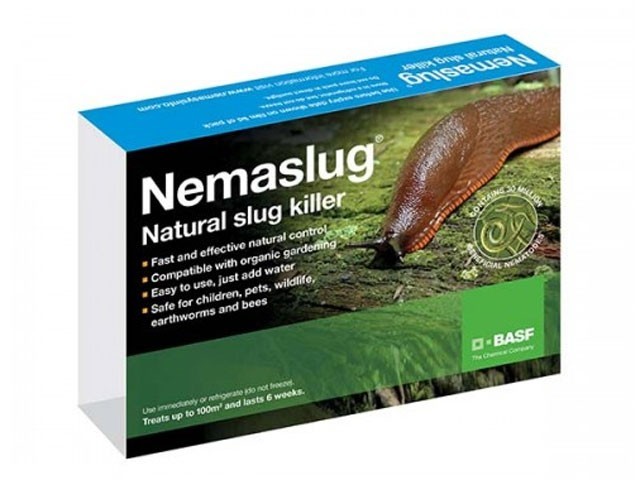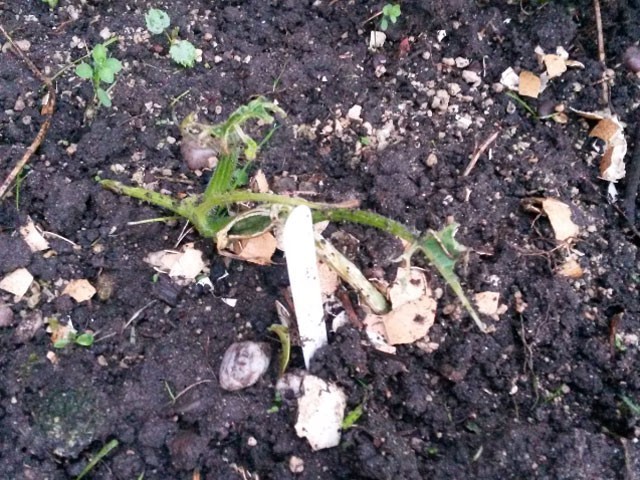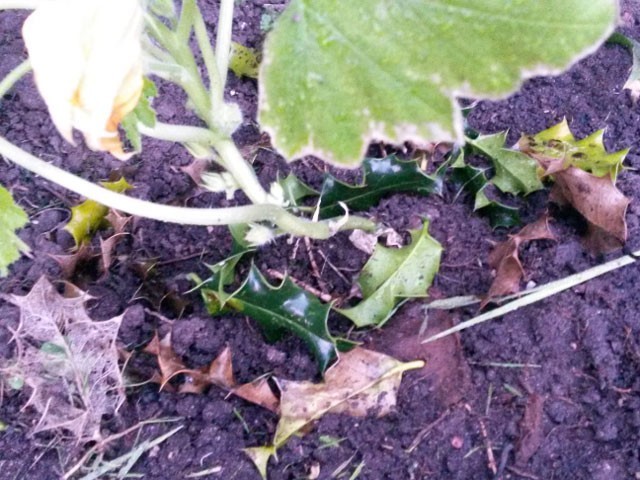I'm now officially a keen veggie gardener, albeit a very inexperienced one and fumbling my way through all the pitfalls. I nearly lost hope as the slugs pounced on four of my beautiful courgette plants, grown from seed, but then I decided I needed to regroup and attack with new strategies. For various reasons, I wouldn't consider using chemical slug control products, so I was left with a series of organic methods I'd come across through recommendation, research and trial and error.
Here's my brief summary of those I came across:
Beer in a jar
Apparently if you leave a dish or jar buried below surface soil level so that just the top is at 'slug height', then fill it with beer, the slugs are more interested in the beer than the veg nearby (they're not daft!!) and wander along following the smell. Once they arrive at the opening to try and slurp some down, they fall in and drown in the jar... not nice, but then I can think of worse ways to go! I couldn't actually bring myself to try this as the thought of emptying a jar of inebriated and/or dead slugs was too much for me. I've heard it does have some success though, so as a quick and easy method, is certainly worth a go.
Diatomaceous Earth or Insect Dust
This is basically the skeletal remains of microscopic creatures, the idea being, as with egg shells (see below), that the sharp edges will put slugs off crawling over it or if not, then they will lacerate the slugs so causing them to dehydrate. You can buy boxes of this at garden centres, but in my experience (and also my dad's who used it) you may as well put your money down the drain instead. The slugs carried over it regardless and scoffed my lovely plants :-(
Nemaslug
This is a concentrated solution which provides, or so it claims, organic slug-free soil for up to 6 weeks per application. Each packet contains millions of Nematodes which are microscopic worms naturally present in soil, in this case the type that naturally feeds off slugs. They are safe to use alongside all forms of wildlife, children, crops and pets, and the worms themselves will return to normal numbers once their food supply has depleted i.e. they've scoffed your slugs! The jury is still out on this one in my garden (it takes around 4 days to work effectively and I'm currently on day 3), but early signs are promising in that my tiny chard, sprouts, carrots and sweetcorn plants all seem to have been left reasonably in tact so far bar a few nibbles.
Egg shells

The logic is that crawling over the egg shells is uncomfortable for the slugs, and therefore they will leave anything surrounded by broken pieces of egg shell well alone. I have now tried this over two consecutive years and have come to the conclusion that slugs don't care one iota whether the shells are or aren't in place. They seem to march on over with such ease. Needless to say, I would rate this as bordering on useless at deterring slithery pests!
Holly leaves
I came onto this idea as I stared at another set of courgette plant remains whilst kneeling next to a holly bush in the garden. If egg shells and insect dust don't work, maybe the sharp prickly leaves of the holly bush will, I thought. So I planted in my one remaining courgette plant and built a holly leaf fortress around the base, whilst propping up all leaves on a holly bush shoot which would otherwise be in contact with the ground. This meant that to get to the plant, the slugs would have to crawl through several layers of spikes. This technique really has seemed to work with no visible signs of slug damage - yay!!!